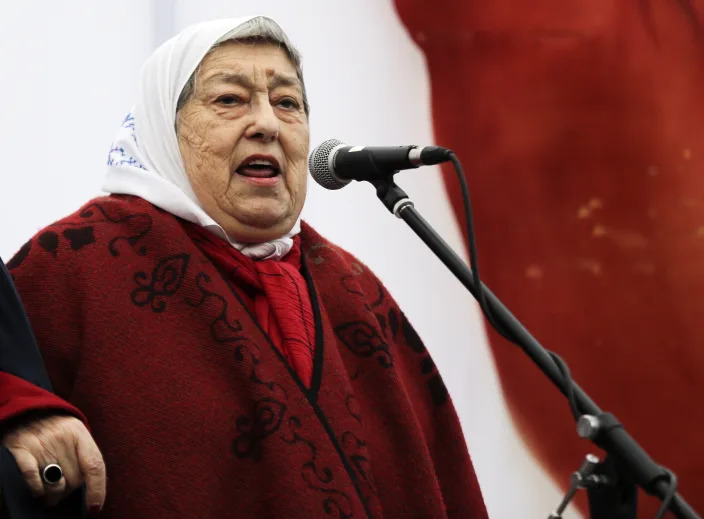Katherine Tangalakis-Lippert
Sun, November 20, 2022
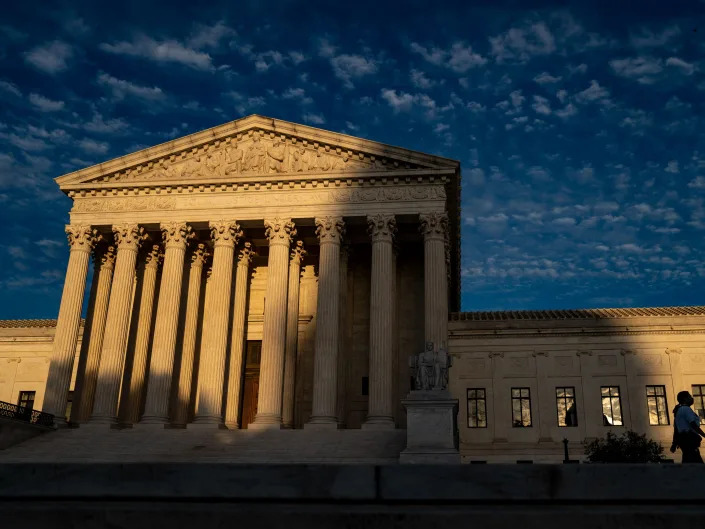
The Supreme Court of the United States on Thursday, Oct. 6, 2022 in Washington, DC.Kent Nishimura / Los Angeles Times via Getty Images
Anti-abortion leaders knew about a 2014 Supreme Court decision before it was official, NYT reported.
Alito's Hobby Lobby decision on contraception would be the second of two known leaks from the court.
The Senate Judiciary Committee will investigate the allegations, AP reported.
The Senate Judiciary Committee is investigating another potential leak out of the Supreme Court, following a New York Times report that said anti-abortion leaders knew about the 2014 Burwell v. Hobby Lobby decision before it was official.
The Times report, published Saturday, indicates Rev. Rob Schenck — an anti-abortion activist known for lobbying the Supreme Court — said in a letter to Chief Justice John G. Roberts, Jr. and in interviews with the Times that he was informed of the outcome of the 2014 case weeks before it was announced.
The Burwell v. Hobby Lobby decision held that corporations can refuse on religious grounds to pay for contraception as mandated by the Affordable Care Act.
Schenck, an evangelical minister and leader of a group called Faith and Action, told Politico earlier this year that, between the years 1995 to 2018, he arranged for conservative couples to fly to Washington to share expensive dinners and evenings of entertainment with Supreme Court Justices Clarence Thomas, Samuel Alito, and the late Antonin Scalia. Couples involved in the "Operation Higher Court" program discussed conservative issues with the justices while taking care not to specifically mention current cases, according to Schenck.
Gayle Wright — who was among those who shared meals with the justices as part of the program — dined with Alito and his wife, Martha-Ann, in 2014 and, following a meeting with the justice, is reported to have told Schenck about the outcome of the Burwell v. Hobby Lobby case weeks before the majority decision was published, according to the Times report.
Justice Alito denied the allegations in a statement to the Associated Press, saying any "allegation that the Wrights were told the outcome of the decision in the Hobby Lobby case, or the authorship of the opinion of the Court, by me or my wife, is completely false."
If the Hobby Lobby leak is authenticated, it will be the second known leak from the Supreme Court. This summer, a draft opinion was leaked in the Dobbs v. Jackson Women's Health Organization case that overturned abortion protections provided by Roe v. Wade.
The Dobbs decision was also authored by Alito.
Senator Dick Durbin, a Democrat from Illinois who chairs the Senate Judiciary Committee, released a statement Saturday indicating the committee is "reviewing these serious allegations" and called on Congress to pass a bill requiring the high court to adopt a code of ethics.
AP reported Rhode Island Senator Sheldon Whitehouse and Rep. Hank Johnson of Georgia also issued a statement Saturday calling for a code of ethics for the highest court in the land, referring to the Times report as "another black mark on the Supreme Court's increasingly marred ethical record" and saying they "intend to get to the bottom of these serious allegations."
Representatives for the Senate Judiciary Committee and the Supreme Court did not immediately respond to Insider's requests for comment.
Sun, November 20, 2022
WASHINGTON (AP) — The chairman of the Senate Judiciary Committee said his panel is reviewing “serious allegations” in a report that a former anti-abortion leader knew in advance the outcome of a 2014 Supreme Court case involving health care coverage of contraception.
The report Saturday in The New York Times followed the stunning leak earlier this year of a draft opinion in the case in which the high court overturned Roe v. Wade, ending constitutional protections for abortion. That decision was written by Justice Samuel Alito, who is also the author of the majority opinion in the 2014 case at the center of the new report.
In the Times story, Rev. Rob Schenck said he learned the outcome of the Burwell v. Hobby Lobby Stores case weeks before the decision was made public. In a 5-4 decision, Alito wrote that some companies with religious objections can avoid the contraceptives requirement in President Barack Obama’s health care legislation.
Schenck, who previously headed the group Faith and Action, has said in other recent stories in Politico and Rolling Stone that he was part of a concerted effort to forge social and ministry relationships with conservative justices.
In the Times story, Schenck said the information about the Hobby Lobby decision came from Gail Wright, a donor to his organization who was part of the outreach effort to the justices and who had dined with Alito and his wife. Wright herself denied obtaining or sharing any information in an interview with the Times.
The New York Times also published a letter Schenck said he wrote Chief Justice John Roberts in July alerting him to the alleged breach years ago. Schenck wrote that he thought the information might be relevant as part of a probe into the leak of the abortion decision.
Sen. Dick Durbin, D-Ill., the chairman of the Senate Judiciary Committee, said in a statement Saturday that the committee is “reviewing these serious allegations," and he called on fellow members of Congress to pass a bill that would require the high court to adopt a code of ethics.
Two fellow Democrats, Sen. Sheldon Whitehouse of Rhode Island and Rep. Hank Johnson of Georgia, who chair courts subcommittees, issued a statement calling the Times report “another black mark on the Supreme Court's increasingly marred ethical record” and said they “intend to get to the bottom of these serious allegations.” They too urged passage of a code of ethics.
The Times' story included an emphatic denial by Alito that he'd disclosed the outcome of the case. The court released Alito's full statement to The Associated Press:
“The allegation that the Wrights were told the outcome of the decision in the Hobby Lobby case, or the authorship of the opinion of the Court, by me or my wife is completely false. My wife and I became acquainted with the Wrights some years ago because of their strong support for the Supreme Court Historical Society, and since then, we have had a casual and purely social relationship.
"I never detected any effort on the part of the Wrights to obtain confidential information or to influence anything that I did in either an official or private capacity, and I would have strongly objected if they had done so. I have no knowledge of any project that they allegedly undertook for ‘Faith and Action,’ ‘Faith and Liberty,’ or any similar group, and I would be shocked and offended if those allegations are true,” it said.
Schenck's Faith and Action group became Faith & Liberty after becoming part of the Liberty Counsel in 2018.
Alito was appointed to the high court in 2006 by President George W. Bush.
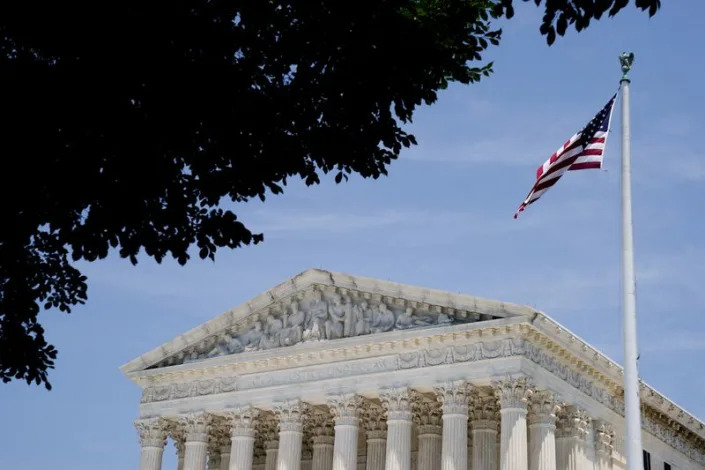
The U.S. Supreme Court building is seen in Washington
Sat, November 19, 2022
By Matt Spetalnick and Laura Sanicola
WASHINGTON (Reuters) -A New York Times report of a former anti-abortion leader's claim that he was told in advance about the outcome of a major 2014 U.S. Supreme Court case involving contraceptives triggered calls on Saturday for an investigation of a court still reeling from the leak of a landmark abortion rights ruling.
Rev. Rob Schenck was quoted by The Times as saying he was informed weeks before the public announcement of the 2014 ruling shortly after two conservative allies had dinner at the home of Supreme Court Justice Samuel Alito and his wife.
Alito wrote that majority opinion as well as a recent one overturning the Roe v. Wade decision that had legalized abortion nationwide, both of which were victories for the religious right.
Schenck, who used to lead an evangelical nonprofit in Washington, said in a letter to Chief Justice John Roberts and in interviews with The Times that he was informed ahead of time about the ruling of Burwell v. Hobby Lobby, a case involving contraception and religious rights, the newspaper said.
Schenck used his knowledge of the ruling to prepare a public relations campaign and he also tipped off the president of the Christian evangelical-run craft store chain Hobby Lobby that he would win the case, according to The Times.
Alito said in a statement that any allegation that he or his wife leaked the 2014 decision was "completely false."
Neither Schenck nor Chief Justice Roberts immediately responded to requests for comment.
Senator Dick Durbin, a Democrat and head of the Senate Judiciary Committee, said in a written statement that the committee is reviewing the allegations. He urged passage of legislation pending in Congress that would create a code of ethics for the Supreme Court. Justices on the top court currently are not required to follow a binding code of ethics for judges in lower federal courts, which Durbin called "unacceptable."
U.S. Representative Mondaire Jones, a Democrat from New York, wrote on Twitter: "Today's well-sourced NY Times article strongly suggests Justice Alito leaked the 2014 opinion in Hobby Lobby, and describes a conspiracy by the far-right donor class to influence the Supreme Court Justices. The House Judiciary Committee must investigate this while we still can."
Brian Fallon, executive director of the progressive judicial group Demand Justice, said The Times' report was "the latest proof that the Republican justices on the Court are little more than politicians in robes."
"The first step to recovery is to admit you have a problem. At SCOTUS, the problems run deep," Democratic U.S. Senator Sheldon Whitehouse of Rhode Island wrote on Twitter.
COURT UNDER SCRUTINY
A draft of the majority opinion to overturn Roe, reversing five decades of abortion rights, was leaked in May, spurring scrutiny of the court's procedures at a time when critics were accusing its conservative majority of politicization. Polls show that the court's public approval has reached record lows.
Alito had called the Roe leak, which was confirmed when the ruling was announced in June, a "grave betrayal."
Schenck was quoted by The Times as saying he had worked for years to gain access to the court and that in early June 2014 two of his star donors, Ohio couple Donald and Gayle Wright, ate a meal with Justice Alito and his wife, Martha-Ann.
Schenck said one of the Wrights then told him that Alito had authored the Hobby Lobby opinion and that it would be in its favor, The Times said. The decision announced three weeks later held that requiring family-owned businesses to pay for insurance covering contraception violated their religious freedoms.
In his statement, Alito said: "The allegation that the Wrights were told the outcome of the decision in the Hobby Lobby case, or the authorship of the opinion of the Court, by me or my wife is completely false."
"My wife and I became acquainted with the Wrights some years ago because of their strong support for the Supreme Court Historical Society, and since then, we have had a casual and purely social relationship," Alito's statement said.
"I never detected any effort on the part of the Wrights to obtain confidential information or to influence anything that I did in either an official or private capacity, and I would have strongly objected if they had done so."
Gayle Wright, in a phone interview, denied obtaining or passing along any such information, The Times reported.
She could not immediately be reached for comment.
(Reporting by Matt Spetalnick, Laura Sanicola and Nate Raymond; Editing by Daniel Wallis)
Supreme Court Breach Was Not the First, Says Former Anti-Abortion Leader
Jodi Kantor and Jo Becker
Sat, November 19, 2022

The Rev. Rob Schenck, who spent years at the center of the anti-abortion movement and led a secretive effort to influence Supreme Court justices, in Washington, Nov. 15, 2022. (Shuran Huang/The New York Times)
As the Supreme Court investigates the extraordinary leak this spring of a draft opinion of the decision overturning Roe v. Wade, a former anti-abortion leader has come forward claiming that another breach occurred in a 2014 landmark case involving contraception and religious rights.
In a letter to Chief Justice John Roberts and in interviews with The New York Times, the Rev. Rob Schenck said he was told the outcome of the 2014 case weeks before it was announced. He used that information to prepare a public relations push, records show, and he said that at the last minute he tipped off the president of Hobby Lobby, the craft store chain owned by Christian evangelicals that was the winning party in the case.
Both court decisions were triumphs for conservatives and the religious right. Both majority opinions were written by Justice Samuel Alito. But the leak of the draft opinion overturning the constitutional right to abortion was disclosed in the news media by Politico, setting off a national uproar. With Hobby Lobby, according to Schenck, the outcome was shared with only a handful of advocates.
Schenck’s allegation creates an unusual, contentious situation: a minister who spent years at the center of the anti-abortion movement, now turned whistleblower; a denial by a sitting justice; and an institution that shows little outward sign of getting to the bottom of the recent leak of the abortion ruling or of following up on Schenck’s allegation.
The evidence for Schenck’s account of the breach has gaps. But in months of examining Schenck’s claims, the Times found a trail of contemporaneous emails and conversations that strongly suggested he knew the outcome and the author of the Hobby Lobby decision before it was made public.
Schenck, who used to lead an evangelical nonprofit in Washington, said he learned about the Hobby Lobby opinion because he had worked for years to exploit the court’s permeability. He gained access through faith, through favors traded with gatekeepers and through wealthy donors to his organization, abortion opponents whom he called “stealth missionaries.”
The minister’s account comes at a time of rising concerns about the court’s legitimacy. A majority of Americans are losing confidence in the institution, polls show, and its approval ratings are at a historic low. Critics charge that the court has become increasingly politicized, especially as a new conservative supermajority holds sway.
In May, after the draft opinion in the abortion case, Dobbs v. Jackson Women’s Health Organization, was leaked in what Alito recently called “a grave betrayal,” the chief justice took the unusual step of ordering an investigation by the Supreme Court’s marshal. Two months later, Schenck sent his letter to Roberts, saying he believed his information about the Hobby Lobby case was relevant to the inquiry. He said he has not gotten any response.
In early June 2014, an Ohio couple who were Schenck’s star donors shared a meal with Alito and his wife, Martha-Ann. A day later, Gayle Wright, one of the pair, contacted Schenck, according to an email reviewed by the Times. “Rob, if you want some interesting news please call. No emails,” she wrote.
Schenck said Wright told him that the decision would be favorable to Hobby Lobby and that Alito had written the majority opinion. Three weeks later, that’s exactly what happened. The court ruled, in a 5-4 vote, that requiring family-owned corporations to pay for insurance covering contraception violated their religious freedoms. The decision would have major implications for birth control access, President Barack Obama’s new health care law and corporations’ ability to claim religious rights.
Alito, in a statement issued through the court’s spokesperson, denied disclosing the decision. He said that he and his wife shared a “casual and purely social relationship” with the Wrights and did not dispute that the two couples ate together June 3, 2014. But the justice said that the “allegation that the Wrights were told the outcome of the decision in the Hobby Lobby case, or the authorship of the opinion of the Court, by me or my wife, is completely false.”
Wright, in a phone interview, denied obtaining or passing along any such information. A representative for Hobby Lobby would not comment. Beyond sharing Alito’s statement, a spokesperson for the court declined to answer questions about Schenck’s account or its investigation.
Schenck was not present at the meal and has no written record of his conversation with Wright. But the Times interviewed four people who said he told them years ago about the breach, and emails from June 2014 show him suggesting he had confidential information and directing his staff to prepare for victory. In another email, sent in 2017, he described the disclosure as “one of the most difficult secrets I’ve ever kept in my life.”
The court deliberates about the fundamental rights of Americans — like access to contraception and abortion — behind closed doors. Schenck’s campaign offers insights into the court’s boundaries and culture, and into efforts to draw the justices closer to communities that are devoted to particular outcomes in critical cases.
In interviews and thousands of emails and other records he shared with the Times, Schenck provided details of the effort he called the “Ministry of Emboldenment.”
Schenck recruited wealthy donors like Wright and her husband, Donald, encouraging them to invite some of the justices to meals, to their vacation homes or to private clubs. He advised allies to contribute money to the Supreme Court Historical Society and then mingle with justices at its functions. He ingratiated himself with court officials who could help give him access, records show.
All the while, he leveraged his connections to raise money for his nonprofit, Faith and Action. Schenck said he pursued the Hobby Lobby information to cultivate the business’s president, Steve Green, as a donor.
It is unclear if Schenck’s efforts had any effect on legal decisions, given that only Justices Alito, Antonin Scalia and Clarence Thomas proved amenable to the outreach, records show, and they were already inclined to overturn Roe v. Wade. That decision was only reversed this year after the addition of new conservative justices altered the court’s ideological makeup. But Schenck said his aim was not to change minds but rather to stiffen the resolve of the court’s conservatives in taking uncompromising stances that could eventually lead to a reversal of Roe.
Schenck, 64, has shifted his views on abortion in recent years, alienating him from many of his former associates, and is trying to reestablish himself, now as a progressive evangelical leader. His decision to speak out now about the Hobby Lobby episode, he said, stems from his regret about the actions that he claims led to his advance knowledge about the case.
“What we did,” he said, “was wrong.”
‘Pushing the Boundaries’
When the Hobby Lobby case was argued before the Supreme Court in March 2014, Gayle Wright and her husband watched from a select spot: seats in the courtroom reserved for guests of Scalia and Alito.
“We were invited to use seats from Nino and Sam,” she had written to Schenck days earlier, using nicknames for the justices. “Wow!”
In the interview, Wright said she used such seats “all the time” because “Nino and my husband were very good friends.” She was eager to hear the Hobby Lobby arguments, she added, because she had an interest in “all cases related to biblical issues.”
Her ties were the result, in part, of years of effort by Schenck.
He had long been an ends-justify-the-means anti-abortion provocateur. During the 1992 Democratic convention, he plotted a stunt to accost future President Bill Clinton with an aborted fetus in a container. He was repeatedly jailed for blocking access to abortion clinics. He helped pay Norma McCorvey, the “Jane Roe” of the 1973 ruling establishing abortion rights, for speaking appearances years later opposing the decision. (She later said she had been paid to lie.)
But no matter how much attention those tactics yielded, Roe v. Wade, one of the most consequential decisions in the past half-century, stood in the way of efforts to end the right to an abortion.
Historically, the court does not like to get too far out ahead of public opinion, and justices do not lightly overturn long-standing precedents. So in 2000, Schenck launched “Operation Higher Court”— an attempt to reach the justices directly.
Justices are given lifetime appointments to promote independence and buffer them from lobbying and politicking. But Schenck wanted the conservatives on the court to hear from people who would hail them as heroes if they seized the opportunity to strike down Roe one day. The goal, he said in an interview, was to “embolden the justices” to lay the legal groundwork for an eventual reversal by delivering “unapologetically conservative dissents.”
He wanted to gain access himself — but because he was a controversial figure, he also recruited couples who were less likely to draw notice. His leading players were Wright and her husband, a real estate developer and philanthropist from Centerville, Ohio. They got involved in his work “to have a major impact on the attitudes and actions of those in a position to shape and interpret our laws,” they wrote in a 2001 newsletter.
From 2000 to 2018, when he left Faith and Action, Schenck raised more than $30 million in pursuit of that goal. His donors ranged from evangelicals with little political involvement to the American Center for Law & Justice, a conservative legal group that was founded by televangelist Pat Robertson and litigates abortion and religious freedom cases. (Faith and Action paid Schenck an average annual salary of about $83,000, plus a housing allowance.)
Schenck has recounted some aspects of his initiative to Politico and Rolling Stone. But he has spoken exclusively with the Times about the alleged Hobby Lobby breach and provided far more detail and documentation about his efforts — including correspondence with donors, anti-abortion activists, court officials and justices.
To remain as close to the court as possible, Schenck purchased a building across the street and began working the court’s employees.
One of his targets was Perry Thompson, an administrator. Schenck befriended him by preaching at a church where Thompson served as pastor in his spare time. He leaned on Thompson to get coveted seats for oral arguments and decision days. In characteristically hyperbolic fashion, Schenck described him in a fundraising appeal as “God’s ‘secret agent’” at the court. Thompson did not respond to requests for comment.
“I exploited my friendships,” Schenck said. “The bad is on me.”
He also encouraged his donors to become patrons of the court’s Historical Society. Four of them, including the Wrights, became trustees, giving at least an estimated $125,000, records show.
That helped him draw close to the society’s executive director, David T. Pride. In November 2011, Pride took Green of Hobby Lobby to the chief justice’s annual Christmas party at Schenck’s request. In an email, Schenck described Green’s parents, already Faith and Action donors, as potential big givers to the society: “Family is worth about $3b.”
Pride responded, saying he would escort Green into the party. He added: “We should consult about what you might like me to promote on your behalf to Mr. Green. Do you have a particular project or the like that you’d like me to talk up? Or should I just extol your many virtues to him?”
A few months later, the Hobby Lobby owners began discussions about joining efforts to overturn the Affordable Care Act’s contraception mandate.
Pride, now retired, said he was happy to help Schenck “do some fundraising with the Greens.”
“Anytime a member of the society — and Rob was a member, and also a close friend — wanted help, I always did what I could,” Pride said in an interview.
Schenck’s overtures met with a mixed response. Roberts and the court’s longtime swing voter, Justice Anthony Kennedy, were “polite but standoffish,” Schenck said. (Once, after he included a photo of himself with the chief justice in fundraising material, he received a letter of rebuke.)
But Schenck said he visited Scalia and Thomas in chambers, where he shaped his prayers as political messaging, using phrases like “the sanctity of human life” to plea for an end to abortion. (Peggy Nienaber, who worked with Schenck, was recently recorded saying that the group had prayed with justices at the court.)
Schenck also asked Scalia to meet privately with the Rev. Frank Pavone, an incendiary anti-abortion activist who ran Priests for Life, a nonprofit that has been involved in issues before the court, as have Schenck and Faith and Action.
“As I am sure you will appreciate, my position does not permit me to assist in the work of Fr. Pavone’s organization,” Scalia wrote in a letter, adding, “I will be happy to meet him, however, at a time he can arrange with my secretary.”
Pavone did not respond to requests for comment.
Supreme Court justices mostly police themselves, which Schenck said he exploited. While they are subject to the same law on recusals as other federal judges, they are not bound by the ethics code that applies to the rest. (Roberts has said they “consult” it.) Under court norms, they can socialize with lawyers or even parties with interests before them, as long as they do not discuss pending cases.
“I saw us as pushing the boundaries of appropriateness,” Schenck said.
Still, the ethics code requires judges to avoid any impression that outsiders are in a “special position” to influence them. It is this provision that the meetings Schenck arranged seemed most designed to test, according to judicial ethics experts.
Amanda Frost, a law professor at the University of Virginia, said in an interview that because the court’s reputation was essential to its institutional legitimacy, justices must take care to “appear to be playing a different role than politicians.” Meeting with a well-known anti-abortion activist could create the appearance that the “person is getting a private opportunity to lobby the justice.”
Though the court does not require justices to disclose meetings with interested parties, there have been periodic controversies, such as when Scalia hunted with Vice President Dick Cheney in 2004 while a case involving his office was pending.
Worried about disclosures, Schenck gave his “stealth missionaries” close instruction. The justices were more likely to let their guard down at the Historical Society’s annual dinners, he advised recruits in a 2008 “orientation briefing,” because they assumed attendees had been “properly vetted.”
“See a justice — boldly approach,” he told the couples, according to a briefing document reviewed by the Times. If given the opportunity, bear witness to “biblical truth” but don’t push it, he said. “Your presence alone telegraphs a very important signal to the justices: Christians are concerned about the court and the issues that come before it.”
Kaitlynn Rivera, who worked for Faith and Action from 2013 to 2015, confirmed many details Schenck provided, including about the donor couples and his relationships at the court. To supporters, the minister boasted about his group’s connections, but he regularly warned them to keep quiet because he “knew the public at large would be upset by that kind of access,” she said in an interview.
Among the couples Schenck recruited were Christ and Dolly Lapp, of Lancaster County, Pennsylvania, now deceased. They befriended Thomas and his wife, Ginni, and hosted them at a restaurant they owned there, according to a letter Schenck wrote for a fundraiser held at the site.
But no donors drew closer to the justices than the Wrights. Donald Wright often hunted with Scalia, according to the businessman’s obituary, and the couple socialized with the Alitos, Scalias and Thomases. They hosted the Alitos at their retreat near Jackson Hole, Wyoming, and the Alitos had the Wrights for dinner at their home in Alexandria, Virginia.
Records show that Gayle Wright, who said in the interview that her interest in the court stemmed solely from her involvement in the Historical Society, regularly reported her contacts with the justices to Schenck.
“Don and I have been invited to a private party in Virginia to celebrate Nino’s 80th,” she wrote to him in a January 2016 email, referring to Scalia.
“Lunch with CT on Monday, Sam on Wednesday, dinner at court on Monday, Dinner with Maureen on Wednesday,” she wrote in another email that year. Schenck understood “CT” and “Sam” to be Clarence Thomas and Alito. (She referred to them by their first names in another email.) Scalia’s widow is named Maureen.
Alito appeared to know Wright’s views well enough to recommend she attend a lecture at the court by Kelly Shackelford, president of First Liberty Institute, which frequently litigates religious liberty cases before the justices. “Sam told us that Kelly is someone we should know,” she wrote to Schenck in 2013.
Wright said in the interview that she had shared such information with Schenck out of friendship and excitement.
In the statement from the court, Alito said, “I never detected any effort on the part of the Wrights to obtain confidential information or to influence anything that I did in either an official or private capacity, and I would have strongly objected if they had done so.”
He added, “I have no knowledge of any project that they allegedly undertook for ‘Faith and Action.’” He concluded, “I would be shocked and offended if those allegations are true.”
‘This Will Be It’
In June 2014, when Wright told Schenck that she and her husband would be dining privately with the Alitos, she and the minister agreed she would try to learn to learn the outcome of the Hobby Lobby case, he said. “She knew I had an interest in knowing,” Schenck wrote in his letter to the chief justice.
On June 4, the day after the meal, Wright sent Schenck her cryptic email saying she had news.
In the interview, Wright said that while she did not have her calendars from those days, she believed the night in question involved a dinner at the Alitos’ home during which she fell ill. She said that the justice drove her and her husband back to her hotel, and that this might have been the news she wanted to share with Schenck.
“Being a friend or having a friendly relationship with a justice, you know that they don’t ever tell you about cases. They aren’t allowed to,” Wright said. “Nor would I ask. There has never been a time in all my years that a justice or a justice’s spouse told me anything about a decision.”
The minister said that after he learned the outcome from Wright in a phone call, he froze. He knew that pending decisions were not supposed to be disclosed and that sharing the information could hurt everyone involved if it got out.
His wife, Cheryl Schenck, said he was agonized. “The reason I remember is all the stressful machinations on, ‘What should I do with this information?’” Cheryl Schenck, a therapist, said in an interview.
Ultimately, Rob Schenck could not resist using it, he said. Emails he wrote over the following weeks reflect the advance knowledge he said he had of the Hobby Lobby decision. While the outcome was not surprising — the justices’ questions during oral arguments had hinted at it — Schenck appeared to know that Alito would author the opinion, even though many court watchers expected Roberts to write it.
On June 12, as Schenck’s team prepared dueling statements for the news media envisioning both a win and a loss, he privately expressed confidence about the ruling to his staff and drafted only a victory message for donors. “I have a Plan B for a different outcome, but from all the information I have, I think this will be it,” he wrote. He included a detailed plan to celebrate their triumph on the steps of the court, where they would drop to their knees in a “prayer of thanksgiving.” When a publicist pointed out there was no message for donors in the event of a loss, he did not email a reply.
He was still torn, he said, over whether to pass the news to Hobby Lobby’s owners. But Schenck hoped to further ingratiate himself with the Green family. “I wanted to give them something of value, and perhaps that would engender a reciprocal gift back,” he told the Times.
As the announcement neared, he grew bolder. On June 29, the day before the ruling, he emailed a staff member that “if it’s positive (confidential: I have good reason to believe it will be),” she should publicly laud Alito as a “reliable defender” of religious freedom. No other justice was mentioned.
That same day, he said, he phoned Green. “As I mentioned, we’ll need to keep it strictly ‘in the family,” Schenck emailed him later that night. “We’re watching and praying!”
Green, through his company, declined to comment. Reached by phone, Barbara Green, his mother, said she learned about the decision when it was announced. “We had no idea which way it was going to go,” she said.
The minister said he told almost no one else at the time, beyond his wife, brother and sister. But three years later, he confided the details to a business associate, who corroborated his story in an interview. That same year, he recounted the episode to a potential ghostwriter for his memoir in an email, calling the ruling “a decision I already knew was a done deal weeks before it was announced from the bench.”
By then, he was changing his position on abortion, citing the toll that unwanted pregnancies take on women, as he later wrote in a Times Opinion essay arguing for the Roe decision to stand. He now regrets the tactics he once employed, saying he had used women and babies as props. “In all of my rhetoric about humanizing the fetus, I had very much dehumanized others,” he said in the interview.
The ruling this year thrilled anti-abortion supporters, though it has proved deeply unpopular among the majority of Americans. After the draft was leaked, Schenck said, he felt compelled to come forward about his attempts to influence the court.
“You can position yourself in a special category with regard to the justices,” he said. “You can gain access, have conversations, share prayer.”
Even when his group was most active at the court, he said, “I would look up at that phrase that’s chiseled into the building itself, ‘Equal Justice Under Law,’” he recalled. “I would think, ‘Not really.’”
© 2022 The New York Times Company

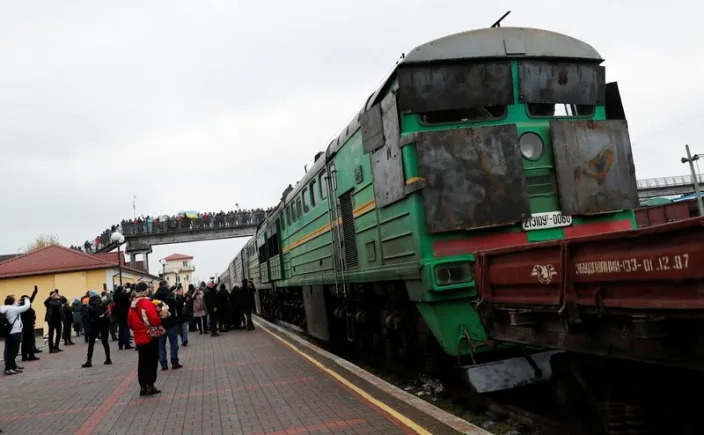



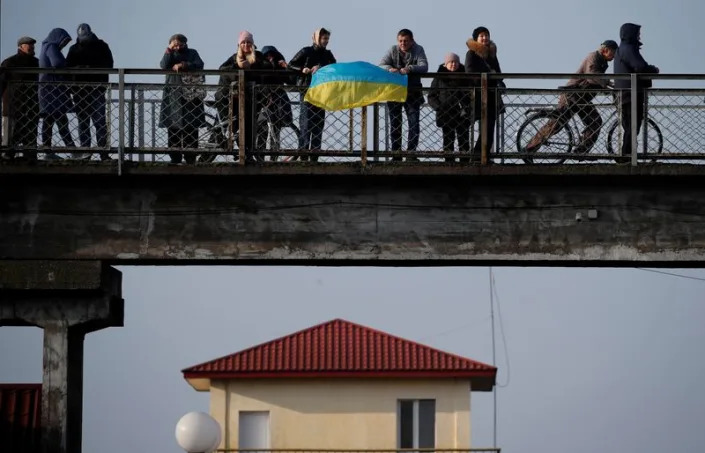


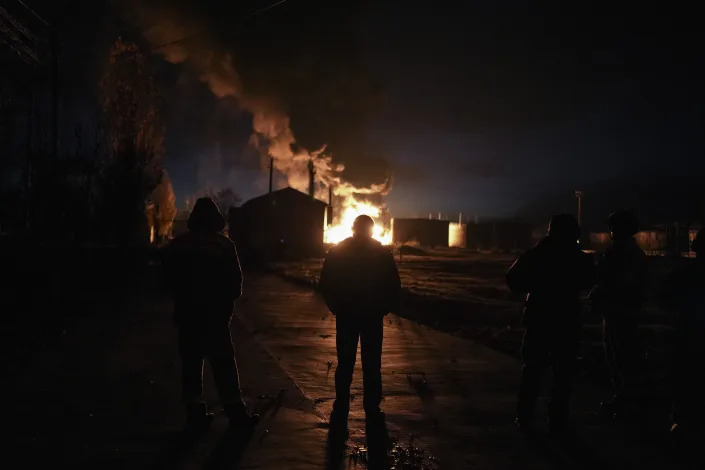

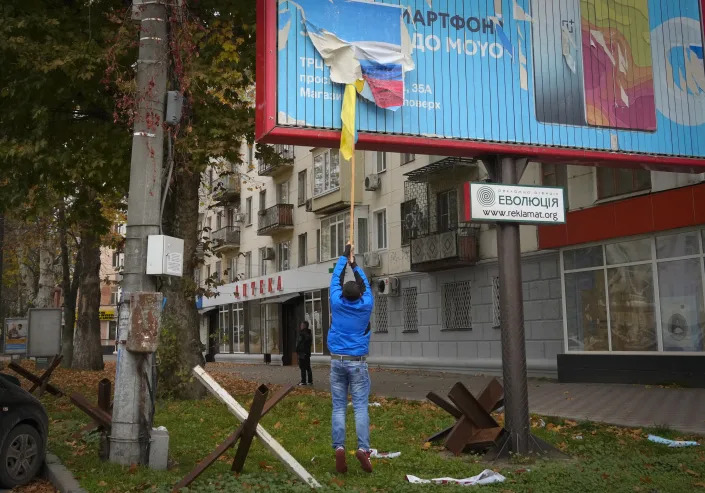


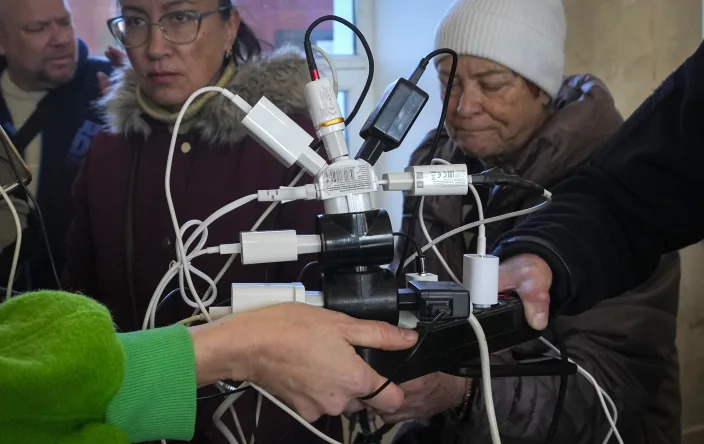
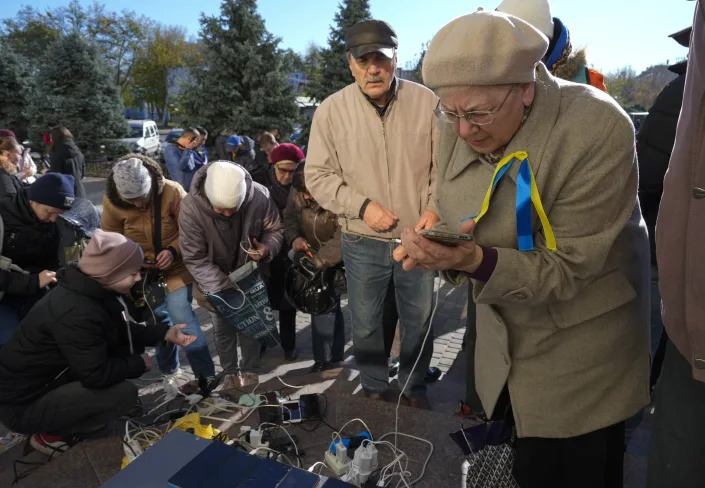










.png)



